
When I first heard about the Sony FE 12-24mm f/2.8 GM, I was stunned. It seemed almost impossible to think that an f/2.8 zoom could go this wide! Indeed, most wide-angle and even ultra-wide zoom lenses for full-frame, whether mirrorless or DSLR, all stop at 14mm, or 15mm, or 16mm.
Sony’s E-mount was supposed to be “too restrictive” according to some. This type of lens should not be possible, and yet, here it is in all its ~$3K glory. Indeed, this lens costs about a thousand dollars more than some of its competitors, and more than double what some excellent third-party options cost.
If it wasn’t for the price tag and the nearly 2 lb weight, I would assume that it’s no good. Maybe it’s soft, maybe it has wild distortion and/or severe vignetting. (Which, when corrected, might leave you with the equivalent of 14mm and/or f/4!) Honestly, no f/2.8 zoom that goes to 12mm could be optically excellent, right? Wrong. Absolutely wrong!
Indeed, considering that it costs more than many photographers’ camera bodies, I went into this Sony 12-24mm f/2.8 GM review giving it the benefit of the doubt, and I was not disappointed.

I will tell you right now that you’re probably going to want this lens. Ask yourself this: is it actually right for the photography you do? Honestly, even if money were no object, or even if you actually enjoy lugging around very heavy lenses, I would still recommend carefully considering the pros and cons of this lens, before you take the plunge.
Without any further ado, I’ll get to it!
Sony FE 12-24mm f/2.8 GM Specifications

- FOCAL LENGHT & ANGLE OF VIEW: 12-24mm (122° to 84°)
- LENS MOUNT(S): Sony FE (Full-Frame)
- APERTURE & RANGE: f/2.8 (constant) to f/22 (minimum)
- STABILIZATION: No
- AUTOFOCUS: Four XD Linear motors in two groups, internal movement
- MANUAL FOCUS: Electronically controlled, linear response, location distance displayed
- OPTICAL CONSTRUCTION: 17 elements in 14 groups, 3 XA, 1 aspherical, 2 Super-ED, 3 extra-low dispersion, Nano AR Coating II
- MECHANICAL CONSTRUCTION: All-metal barrel, fully weather-sealed
- MAGNIFICATION & FOCUS DISTANCE: 0.14x, 28 cm (11.02″)
- FILTER THREADS & HOOD: Rear drop-in filters (no front filter threads)
- SIZE: 146 x 90mm (5.75 x 3.54″)
- WEIGHT: 847 g (1.86 lbs)
- PRICE: $2,998
(Adorama | B&H | Amazon)
Sony FE 12-24mm f/2.8 GM Review | Who Should Buy It?
If you have a Sony full-frame mirrorless camera, then you probably already know that their “GM” G-Master line of lenses is their flagship, professional offering.
The Sony 12-24 2.8 GM is definitely that: a no-compromises lens that serious professionals ought to consider, without a doubt.
However, what about beginners, hobbyists, or professionals who don’t necessarily need an exotic wide-angle lens? Honestly, it really depends on the type of photography you do, because there is a chance that this lens is, yes, “overkill”.
Architecture & Real Estate Photography

If you’re an architecture & real estate photographer, then you absolutely did take note, and maybe even start to drool, when this lens was announced. For this line of work, whether it’s paid or just a hobby, there is simply no such thing as “too wide”.
The Sony 12-24mm f/2.8 GM is absolutely the best lens on the market for this type of photography, because not only is it impressively sharp at all apertures and all focal lengths, but it also has virtually zero distortion, which is extremely important for a genre that has tons of straight lines in essentially 100% of the photos!
This is a situation where you could “make do” with something less, such as the much older Sony FE 12-24mm f/4 G, or the new and optically excellent Sigma 14-24mm f/2.8 DG DN Art, however, if you can afford it, you should treat yourself to the best, as this lens will literally pay your bills doing real estate and architecture work.
Landscape Photography

Landscape photographers, of course, are also going to love the idea of being able to zoom out further than 14mm or 16mm. Especially with the latest trends in popular imagery that I’m seeing on social media; it seems like 12mm, or even 11mm and wider, are often used to dramatically emphasize a foreground element, and create a truly dynamic scene.
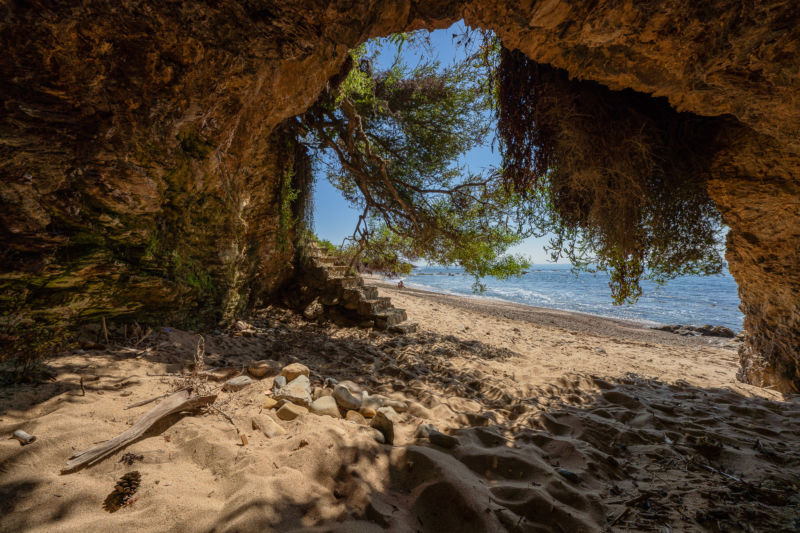
Personally, however, I’m not always a fan. In my time with the 12-24mm, I honestly found that a vast majority of the time, I ended up with a lot of empty, negative space around what was a good framing at 14mm or even 16mm. The only time that I felt like I really and truly “needed” 12mm was when I was literally backed into a corner and trying to frame something like a cave or other natural features.

So, it really depends on your style as a landscape photographer. For me, I only found 12mm to be truly useful when I literally had that much interesting scenery (122 degrees horizontal!) to fit in.
Nightscape & Astrophotography

When you add the night sky to your landscape, of course, then 12mm becomes a lot more useful and exciting. I find myself experiencing a lot more situations where I’m wishing I could fit elements into a scene more comfortably.
You do still run the risk of having “too much space” around the edge of some compositions, I found, because 12mm is indeed much wider than 14mm and 16mm, which many astro-landscape photographers are accustomed to.

However, other times, I really do want 12mm instead of 14mm because that extra space gives the Milky Way or other subjects a little more “room to breathe” in my composition, as opposed to it just barely being at the edge of my scene.
Hands-down, if you shoot astro-landscape photography, then you’ll want this lens about as much as, or even more than, someone who does real estate interiors. Especially considering that (spoiler alert!) it is an absolutely excellent performer wide-open at f/2.8 and 12mm.
Wedding & Portrait Photography

Everything from portraiture to wedding photojournalism could use a wide-angle lens, but if you ask any experienced pro, they’ll probably tell you that they’re just not dying to get to 12mm. It can be useful in very small spaces, but that’s about it…
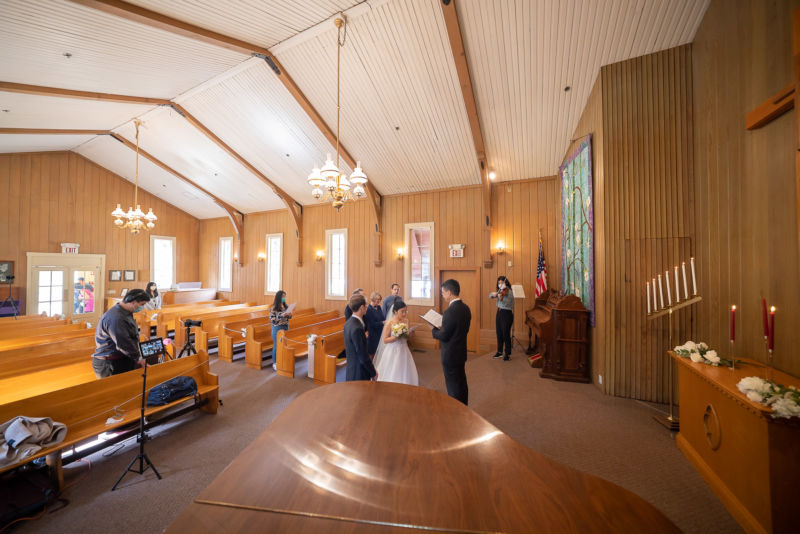
In fact, most event journalists or large-group portrait photographers aren’t usually going much wider than 16mm or 17mm, because of the natural distortion that occurs, no matter how much “straight lines stay straight”. You just shouldn’t be putting human beings at the very edge of a frame wider than 20mm, if you can avoid it.

The bottom line for me is, you’d have to be doing some pretty exotic, dramatic portraits or event work in order to justify this lens. Otherwise, my go-to wedding & portrait lens is still the simple, compact, affordable Tamron 17-28mm f/2.8, or the similarly compact & lightweight Sigma 14-24mm f/2.8, if you’re OK with forfeiting filter threads in order to gain 14mm, which has been more than enough for every job I’ve ever had in my entire 15-year career as a portrait & wedding photographer.
Candid & Street Photography

While the Sony 12-24mm f/2.8 GM is not a diminutive, incognito lens at all, (in fact it’s the biggest ultra-wide zoom ever made, I think?) …it is still a really cool option for street photography and that type of wide-angle candid imagery.

Whether you’re trying to squeeze in a whole urban downtown scene with skyscrapers or other architecture looming over you, or you’re trying to fit a tiny room into your frame as a photojournalist, the Sony is a champ.
Once again, however, I have to recommend first trying out 14mm or 17mm to see if they’ll work for you, before going all-in with this 12-24mm. Honestly, most of my candid, casual photography is more likely to be done on a 24mm or 35mm prime, actually.
Fashion & Editorial Photography
High-end portrait work might call for some more serious wide-angle focal length options if there is a specific look you are going for or a particularly challenging environment. However, again, I suspect that most high-end commercial work that involves human subjects is going to see the widest focal lengths of around 24mm, so for the few times when ~12mm might be useful, I can’t really imagine needing more than something that is already rather exotic and professional-grade, like the Sigma 14-24mm f/2.8 Art.
Sports, Extreme Sports, Action Adventure Photography

All types of extreme sports and adventures can really benefit from ultra-wide focal lengths because you often never know exactly where the action is even going to occur, or you simply want to capture a sense of scale that makes your adventure/athlete subject become just a part of the landscape.
Alternately, maybe you’re simply going for that up-close, dramatic in-your-face look that uses perspective distortion to emphasize a subject while again including virtually everything in the background. Either way, 14mm is already really fun for this, and let me tell you, 12mm is even more fun!
Sony FE 12-24mm f/2.8 GM Review | Pros & Cons
I hinted at this already, but here it is, plain and simple: This lens is optically near-perfect, however, the only way to achieve such a feat was to make it massively large and heavy. Plus, of course, Sony believes that they can charge whatever they want for a lens that is truly peerless.
Indeed, I honestly doubt if Canon or Nikon will make a competing f/2.8 zoom that goes to 12mm any time soon, so, that’s it! Technically, this lens has no competition.
Image Quality
Of course, the numbers on the spec sheet don’t mean much if the image quality is terrible. There are quite a few third-party lenses on the market today that go to such ultra-wide focal lengths as 12mm and even 11mm or wider, however, they are all quite sub-par in terms of image quality. They have significant distortion, and/or severe vignetting, and oftentimes, just plain “mush” for corners.
This is not the case with the Sony 12-24 2.8 GM; its image quality is nearly perfect.
Sharpness


Sharpness at all focal lengths and all apertures is truly impressive. There is no “weak spot” at 24mm, or somewhere in the middle, that you have to watch out for as with older zooms, including the Sony 16-35mm f/2.8 GM. (More on that later!)


Indeed, as you can see above, the central image area is not just sharp at f/2.8 and 12mm, it is so sharp that it almost appears to be out-resolving the 60-megapixel Sony A7R IV. In other words, of we see a 70-megapixel or 80-megapixel Sony A7R V or Sony A7R VI, …this lens will be ready for that next-generation camera.
Bokeh

If you do get super-close to a subject and are able to blur the background, then you’ll get decently smooth results. However, this isn’t exactly the type of lens you buy for its bokeh, even though it’s f/2.8 as opposed to f/4. Even if you’re obsessed with image quality, you should be buying this lens because it offers 12mm.
Colors & Contrast
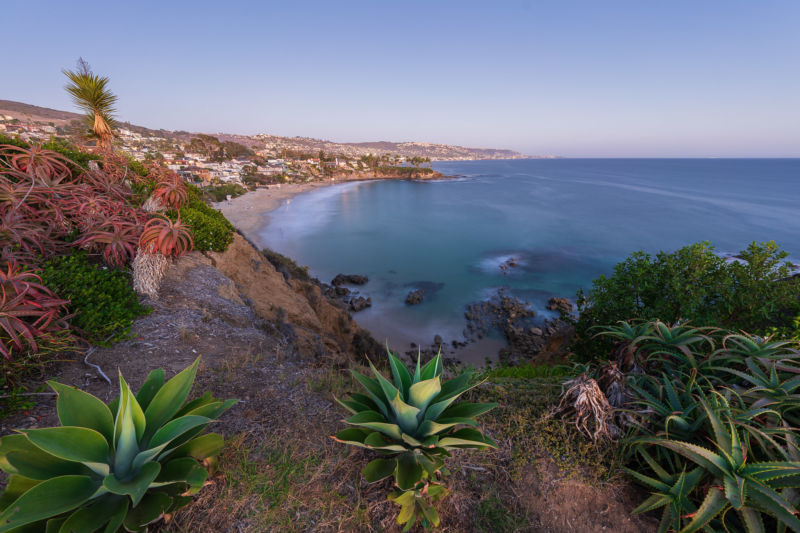
As a GM (G-Master) class lens, the Sony 12-24mm f/2.8 offers gorgeously clear, crisp images that look beautiful in-camera on any of the current-generation Sony cameras. Having said that, post-processing is highly subjective, of course, so all I can say is that the 12-24 GM doesn’t have any color casts, aside from what I’m about to mention next…
Vignetting & Distortion

First, let’s talk about what you see when you look at an un-edited photo, with your Sony camera’s lens correction profiles set to “Auto”: You will see a nearly perfect image! Virtually zero distortion, and not much vignetting to speak of, even at f/2.8 and 12mm.
This is truly impressive, but that’s what you get when there is so much glass in an optic, and when you are paying nearly $3K. You get a relatively bright, well-corrected professional lens.
What if you turn the in-camera correction profile off, and observe the “natural” vignetting and distortion? Surprisingly, it is still very low in both regards. There just isn’t much distortion or vignetting even at 12mm and f/2.8. This truly is a bright-transmission, well-corrected optic.


Having said that, there is a downside that I absolutely must warn you about, especially if you heavily edit your photos and are pushing the limits of what is possible at high ISOs. If you leave the in-camera corrections on, you may run into the same issues that have been plaguing almost all mirrorless lenses for years now.



Unfortunately, the correction profile may cause a donut-shaped vignetting artifact, which may be barely visible on a smooth-toned (empty blue sky?) image. However, at higher ISOs, the distortion correction will create a really nasty pattern that gets more visible as you increase your sharpening and any micro-contrast sliders such as Texture or Clarity.
If you shoot under such conditions and edit your photos heavily, then I recommend simply turning off the in-camera profile corrections entirely, and applying just a minimal amount of manual vignetting correction to your own taste.
Sunstars & Flare

Flare is impressively well-controlled for a lens with such a bulbous front element, and thanks to all the exotic coatings there are virtually no “dot” flare aberrations. You have to basically be putting the sun right in the corner of your image frame in order to start seeing anything annoying, and even then you can often eliminate it by just slightly recomposing your shot.

Sunstars are well-defined by f/8 or f/11, but they’re not actually very “pointy” or sharp. Unfortunately, most all Sony GM lenses have smoothly rounded aperture blades and optics that are optimized for creamy bokeh, instead of needle-sharp sunstars. This is unfortunate because we’re talking about a 12-24mm lens, but on average, I do suspect that more photographers care about bokeh than sunstars, of course.
Color Fringing, Aberration, Coma & Astigmatism
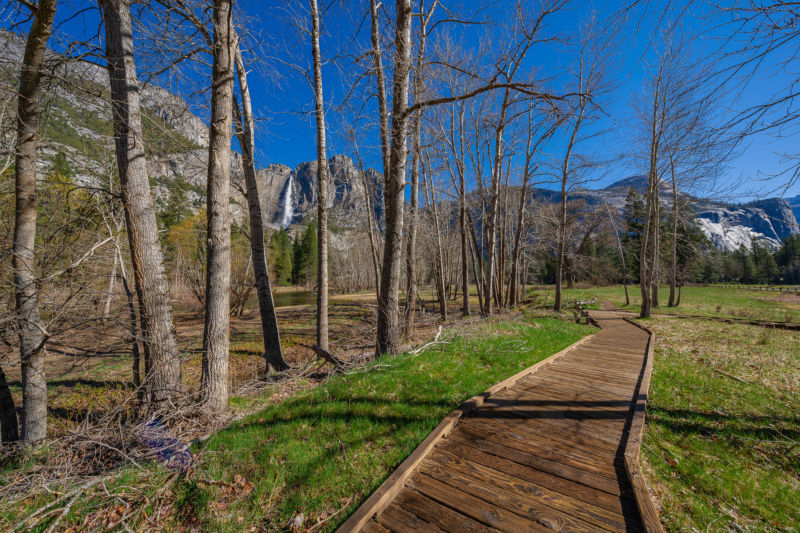

For all you nightscape photographers out there, here’s your good news: This lens has impressively low coma, astigmatism, and color fringing! Don’t believe me? Here’s the toughest test possible: 12mm, f/2.8, and the Sony A7R IV, the highest-resolution full-frame sensor on the market.
Let’s go straight to the extreme corners of the frame since we already know that the center is absolutely tack sharp…
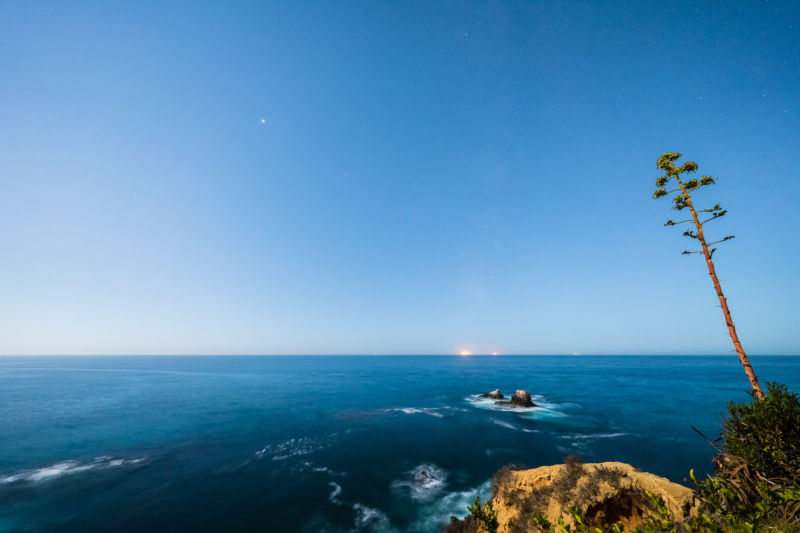

This level of impressive performance is likely why the lens includes so much glass; every little aberration is very well-corrected, even in the corners at 12mm and f/2.8. It’s not absolutely flawless, but it’s still on par with the best, and that is an impressive feat.
Macro & Close-Up Photography

Getting up-close with a 12mm lens is actually quite fun! I did not have too many opportunities, but the perspective distortion you can achieve is a really interesting creative tool.
When focusing at this lens’ minimum focus distance, you aren’t going to see any loss of image quality, although the plane of focus isn’t very flat and you shouldn’t expect sharpness to be possible both dead-center and in the corners at the same time.
Design & Durability

The Sony FE 12-24mm f/2.8 GM definitely feels like a rock-solid flagship lens. In fact, when you first pick it up, you might even wonder if the guts of the lens literally contain rocks, because yeah, that much glass is really heavy!
I’m not done complaining about the size/weight yet, but I will say that the physical durability of this lens is excellent. As a G-Master flagship lens, it is fully weather-sealed. However, that exposed front element shouldn’t be left out in a torrential downpour for too long!
Ergonomics & Portability
Again, this lens is massive. If you thought those 14-24mm f/2.8 zooms from years past were heavy, this one says, “hold my beer!”
A lot of photographers who are in good shape (and who are young enough to not know what arthritis or a knee injury feels like) will say, “why do some people complain about how big and heavy pro lenses are? Maybe you should go to the gym!”
Honestly, we’re well past that point with this Sony 12-24mm f/2.8. It’s just too heavy for some uses. I am willing to lug many pounds/kilograms of gear up mountains, in fact, my backpacks often clock in at ~50 lbs, but I have to draw the line somewhere!

Here is the best way I can explain it: If I bring this lens on an adventure or trip, it’s not just adding weight to my back/shoulders/hips. It is taking up the space and weight that another lens could occupy. I’d prefer to be able to bring 3-5 lenses on even the most rugged, strenuous adventures, and THAT weight adds up.
So, to most photographers, the Sony 12-24mm f/2.8 GM isn’t that bad if you’re not walking very far from your car or studio, and if you’re not holding it to your eye for hours on end. You’ll probably love this lens, and the size/weight won’t be a deal-breaker.
Ergonomically, it is definitely front-heavy, and you’ll want to hold it with both hands as if you’re holding a 70-200mm f/2.8, even if you’re only hoisting it for a minute.
Autofocus Performance
Sony’s latest GM lenses have the absolute best in autofocus technology, with speed and precision that mirrorless setups could have only dreamed of 5+ years ago.
Which is a good thing, too, because honestly, at 12mm, the depth of field is so deep that you’ll almost never know if you’ve missed focus just a little unless you’re zooming in to 100% magnification and focusing manually. Even for active situations in low light, I rely on Sony’s autofocus technology 99% of the time.
Manual Focus Performance
Focusing manually is very easy with this lens because once you magnify live view, perfect sharpness is very easy to see.
This is often a problem with other third-party lenses that you might consider which go to 12mm or even 11mm, such as Laowa/Venus Optics, or Irix, etc: the lenses just aren’t perfectly sharp when their aperture is wide-open, so nailing focus is a lot harder, even with “marching ants” turned on.
Features & Customizations
This particular Sony GM lens has both an AF/MF switch and a customizable Fn button. It does not, however, have an aperture ring, and of course, it is un-stabilized. You obviously can’t fit threaded filters on the front of this thing, but there is a slot for gel filters in the back.
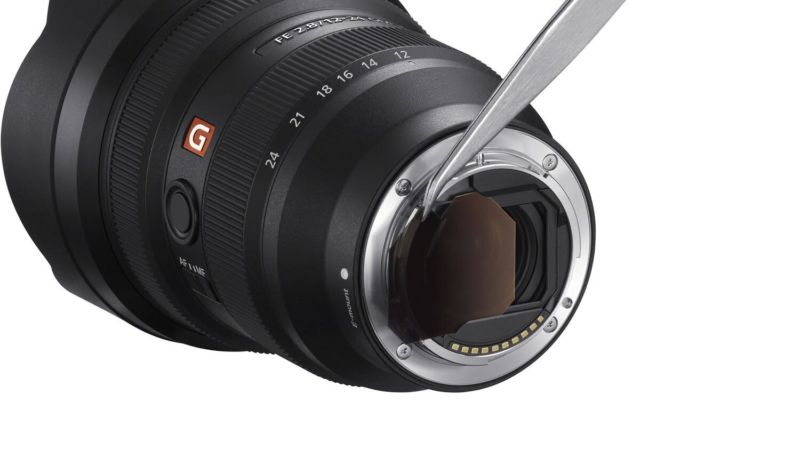
Honestly, I have no complaints. I don’t particularly care for aperture rings on modern lenses like the Sony FE 50mm f/1.2 GM. (Review coming soon!) they’re just too easy to bump out of place, and even if they do come with a lock switch, it just means that I’m really not going to use the feature!
I do appreciate the relatively customizable “control rings” that appear on some Canon RF and Nikon Z mirrorless lenses, though. I do wish that the Sony lenses which did have an aperture ring, were more customizable than just controlling aperture alone. Having said that, I understand that Sony’s advantage is often for video shooters who appreciate the de-clicking feature more than other customizations.
Value

Here is where you’re going to have to ask yourself the serious question: Is this lens really worth three thousand dollars?
The answer is yes if you need a zoom that goes to f/2.8, and, if not, then, …it’s complicated! Considering everything I’ve already mentioned about what type of photography you do, hopefully, you already know whether or not this lens will be worth it to you. If you’re still not sure, don’t worry, next I am going to make it even more clear by comparing this lens against its closest competitors.
Sony FE 12-24mm f/2.8 GM Review | Compared To The Competition

Sony’s E-mount has a ton of options now. In fact, thanks to third-party lens makers, Sony has by far the most options, including dedicated wide-angle and ultra-wide focal lengths.
Of course, no other f/2.8 zoom goes to 12mm, yet. There is the Sony FE 12-24mm f/4, which is much older and optically inferior. So, even if you plan to take all your photos at f/8, you’ll still want to get this flagship lens if you pixel-peep images for sharpness, etc.
There is the Canon 11-24mm f/4 L, which is a DSLR-mount lens that you might consider if you are ready for something approximately the same “ouch factor” in terms of price and weight, but you’d rather have 11mm f/4 instead of 12mm f/2.8.
Other than that, you’re mostly going to be considering alternatives that either compromise on zoom range, and/or compromise on image quality. Nothing really comes close to the Sony 12-24mm f/2.8 GM.
Do You Really Need 12mm?
Before I recommend the best alternatives, though, I want to ask an even more important question: Do you actually need 12mm? Honestly, a lot of the time, I just don’t…

Technically speaking, ask yourself: do you photograph subjects that are often challenging to fit into the frame? Even at 16mm or 14mm? Then give 12mm a try, of course.
Creatively speaking, it’s a bit more subjective, but the same question applies: have you played with dramatic ultra-wide focal lengths before? Do you already know how much you like such focal lengths as 17mm or 14mm? Simply put, if you love the dramatic effects you can get with 14mm, then you might want to try 12mm.
Also, here’s one other thing to consider: What about cropping? You may want to “get it right in-camera”, but it’s not always about framing the perfect 2:3 aspect ratio scene. What about cropping a panorama?

In the above example, I created a 1:3 aspect ratio crop, which is a 20-megapixel image when using the Sony A7R IV. Alternately, when cropping just a bit more modestly to a 1:2 aspect ratio, I’d have a respectable 30-megapixel image!
Sometimes it might be easy to zoom in to ~24mm and capture multiple frames for a panorama, however, when there is water involved, I really dislike having to deal with ripples/waves in panorama stitching! The above image would have been impossible, or at least highly impractical, without a 12mm lens.
Best Sony 12-24mm f/2.8 GM Alternatives
The top two alternatives I’d recommend are the Sigma 14-24mm f/2.8 DG DN Art, and the Tamron 17-28mm f/2.8. Why not the Sony 16-35mm f/2.8 GM, you may ask? Because it is from an older generation of optics that is simply inferior. It’s expensive and heavy, and yet it’s not optically excellent, and even has a noticeable discrepancy between sharpness at 35mm versus 16mm.
[Related: Sigma 14-24mm f/2.8 DG DN Art Review | The new Sony FE Ultra-Wide Champion?]
If you want an excellent all-around f/2.8 wide-angle zoom for your Sony full-frame mirrorless camera, then for well under $1,000 you can’t go wrong with the Tamron. By making the compromise on zoom range, which is admittedly significantly less than 16-35mm, you gain an incredible level of portability that most photographers will really appreciate. Also, it’s incredibly sharp!
For the pixel-peepers who do want to go as wide as possible, (and who hopefully have a 24-70mm or 28-70mm lens to complement it) …the Sigma 14-24mm f/2.8 DG DN Art costs a little more than the Tamron, and weighs a bit more too, however, it is truly a flagship-level optic. Considering that you have to have a pretty extreme, dramatic style for 12mm to make that much of a difference from 14mm, I think that most photographers, though certainly not all, will prefer the more reasonable Sigma.
Having said all that, what if you really do want 12mm? The alternatives all fall short. there are a handful of primes that hit either 12mm or 11mm, (and maybe even some lenses that hit 10mm?) however none of them appear to deliver the same optical performance as the Sony, not by a long shot.
Sony FE 12-24mm f/2.8 GM Review | Conclusion

If you want the absolute best ultra-wide zoom ever made, this is it. Sony, Nikon, Canon… No full-frame option can offer what the Sony FE 12-24mm f/2.8 GM offers.
Hopefully, by now, I have repeated the key points enough for you to know whether or not it’s actually right for you! The truth is, there are a lot of excellent choices out there, both E-mount (third-party) and for other mirrorless mounts, so I would say, “you can’t go wrong”, but that’s not the whole story, of course.
Choose the best ultra-wide zoom for the type of photography you do, and you will not regret it! If you decide that the Sony 12-24 2.8 GM is right for you, then you will certainly be blown away.
Check Pricing & Availability
The Sony FE 12-24mm f/2.8 GM is available for $2,999 from Adorama, B&H, and Amazon.
8.8 Score
Pros
- Near-perfect image quality
- Unprecedented zoom range (for an f/2.8 zoom)
- Excellent build quality & weather sealing
- Fast, reliable autofocus performance
- One-of-a-kind value
Cons
- One of the biggest, heaviest wide-angle zooms on the market
- The most expensive wide-angle zoom on the market
- No threaded filters
- No hyperfocal focus markings
Final Verdict
For $3,000, you should expect perfection, and indeed, that's pretty much what you get with the Sony FE 12-24mm f/2.8 GM. If you absolutely need 12mm, as opposed to 14mm or 17mm, then you won't be disappointed.
Matthew Saville
Follow his wilderness nightscape adventures on Instagram: instagram.com/astrolandscapes




Get Connected!